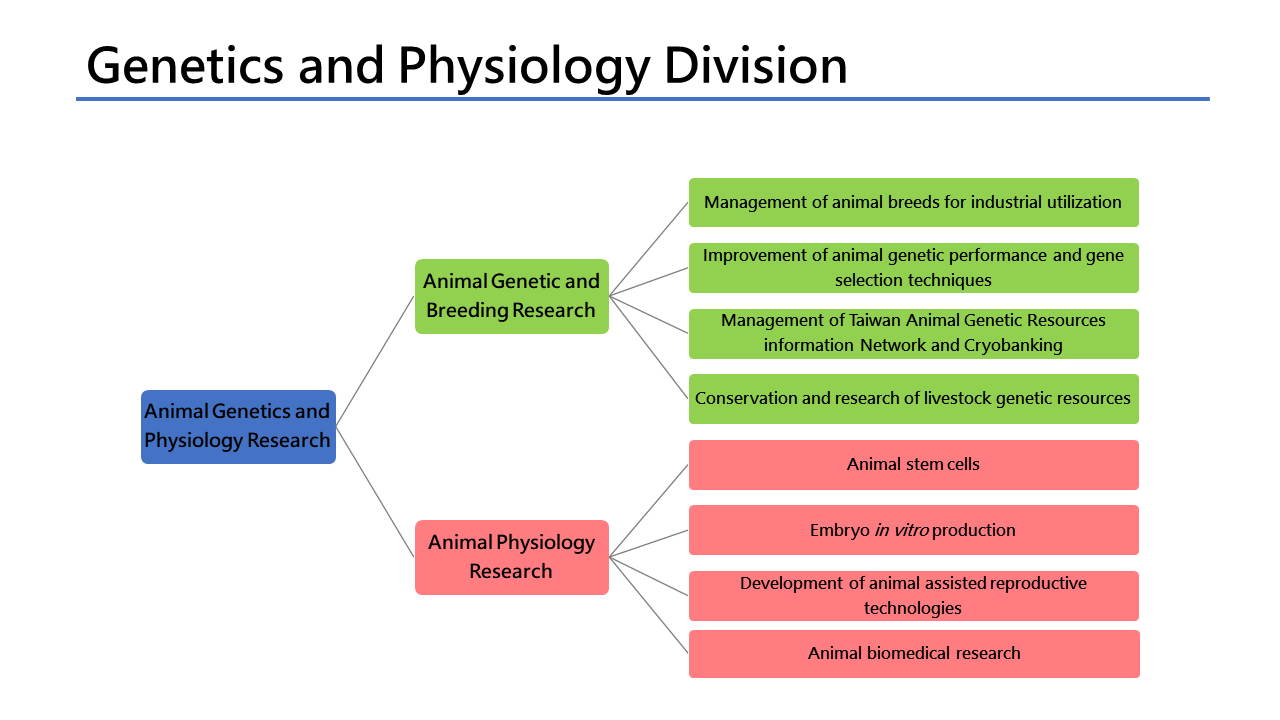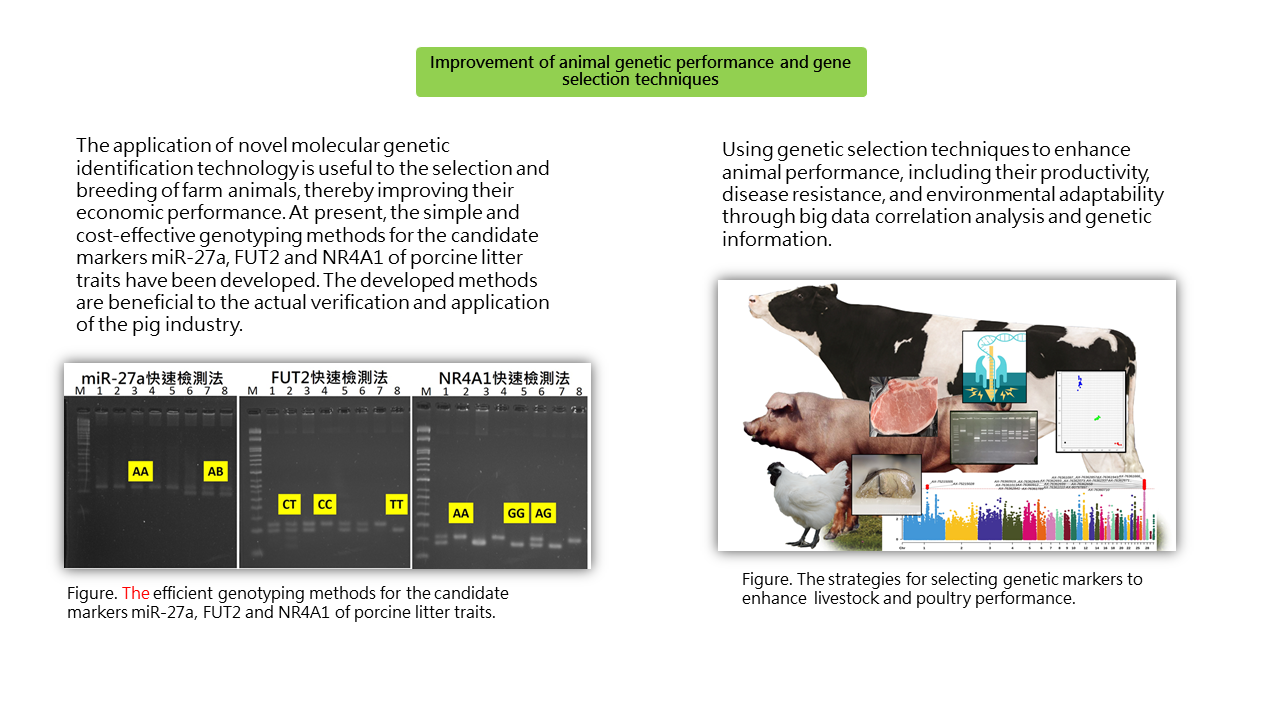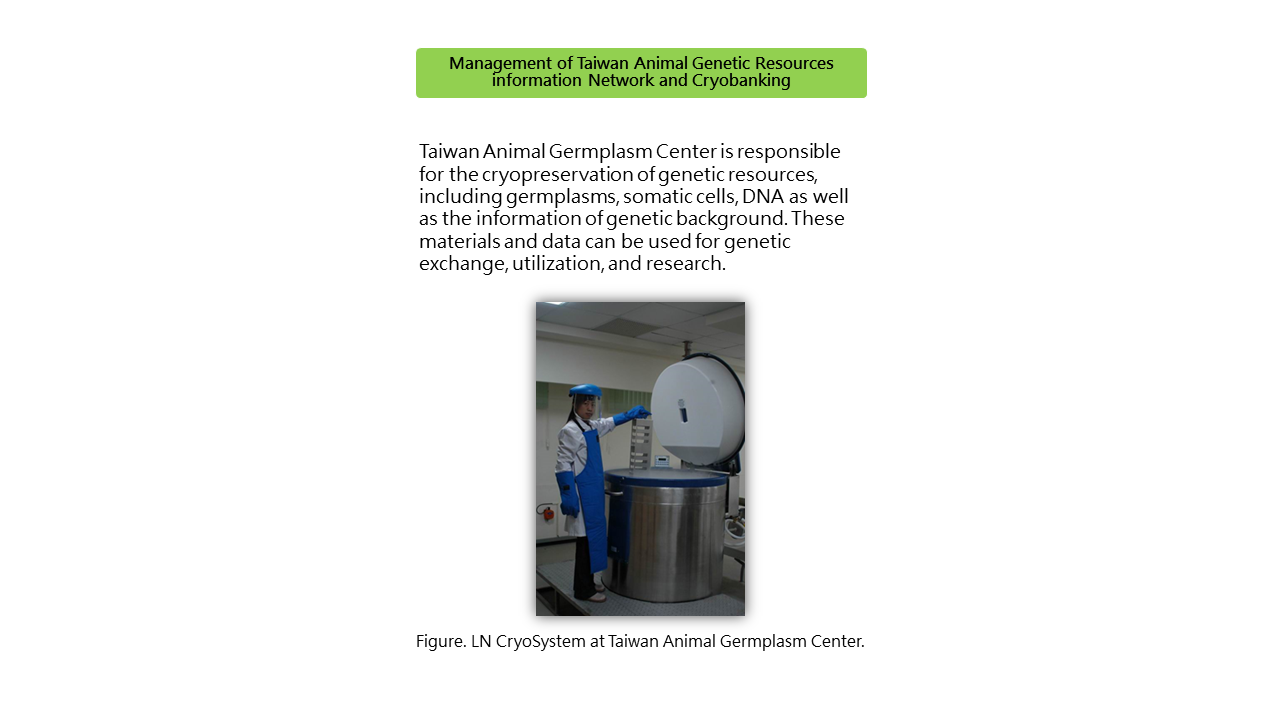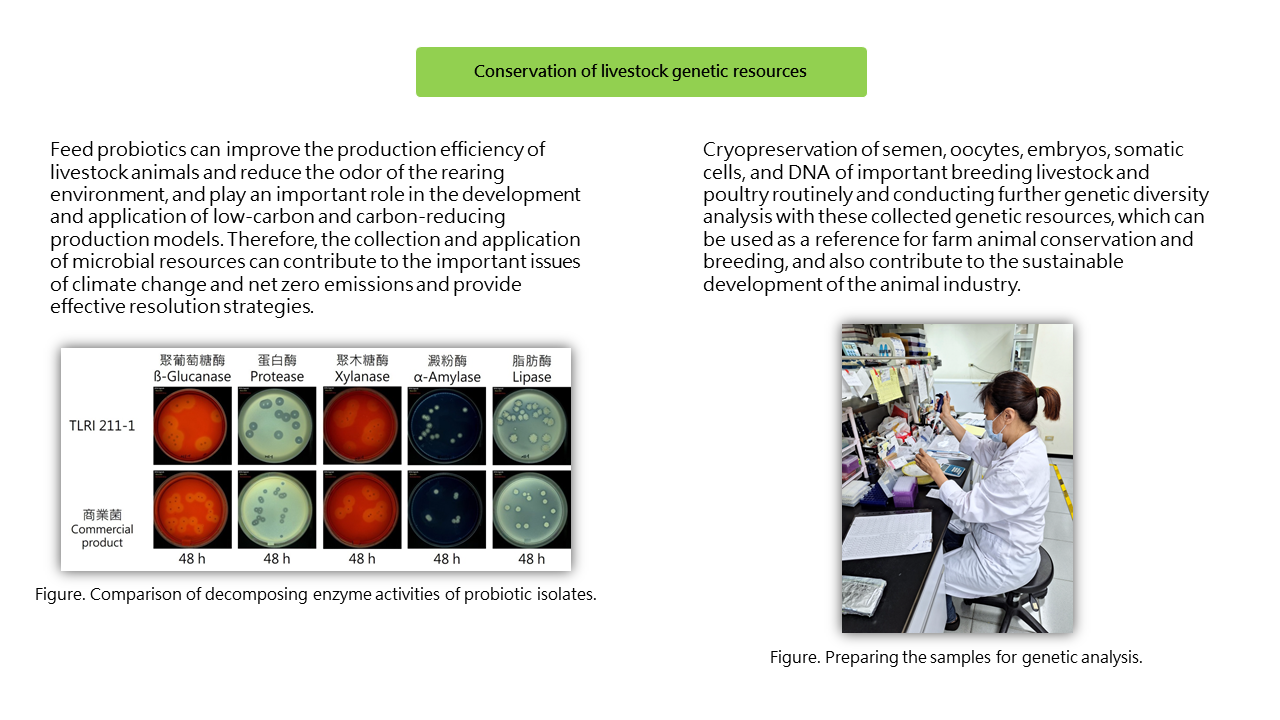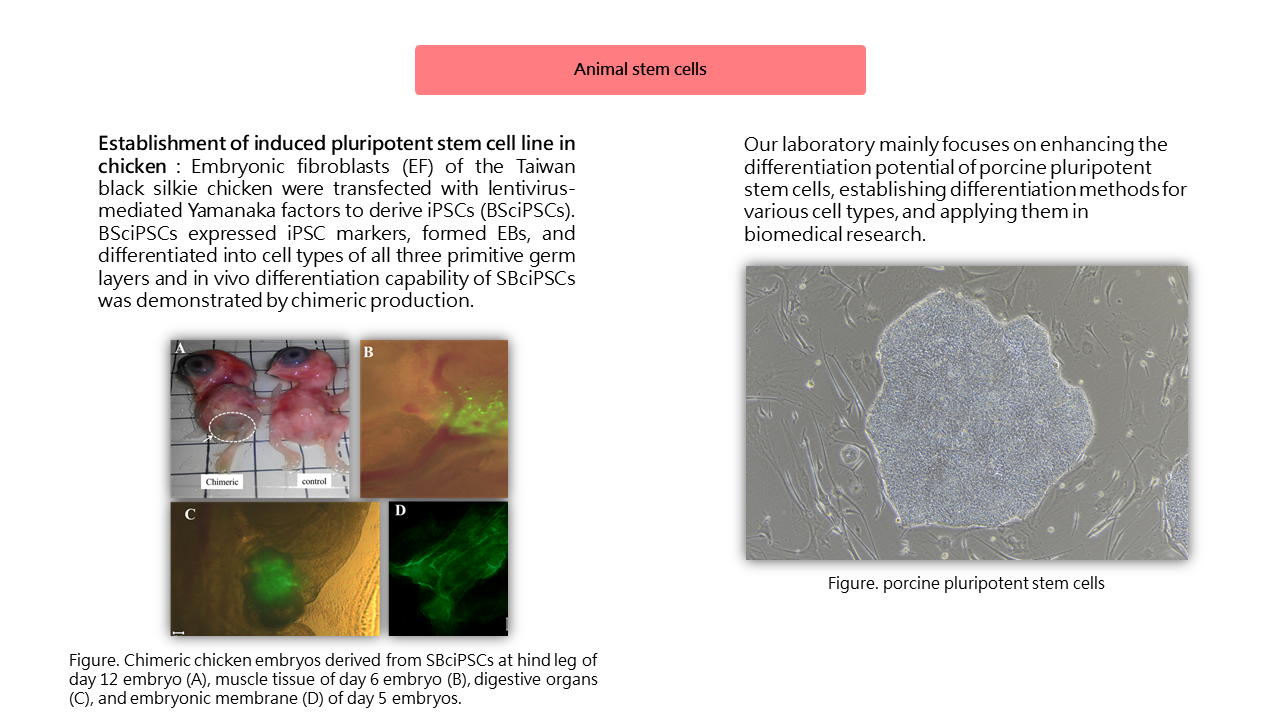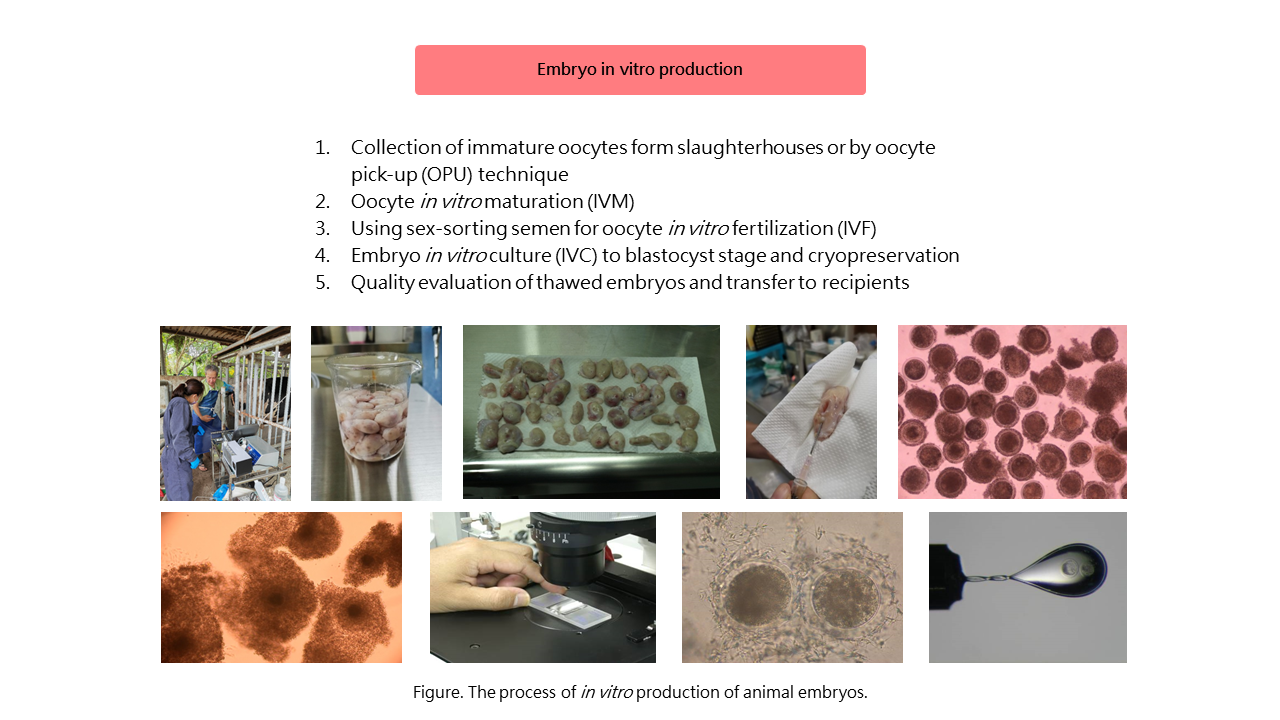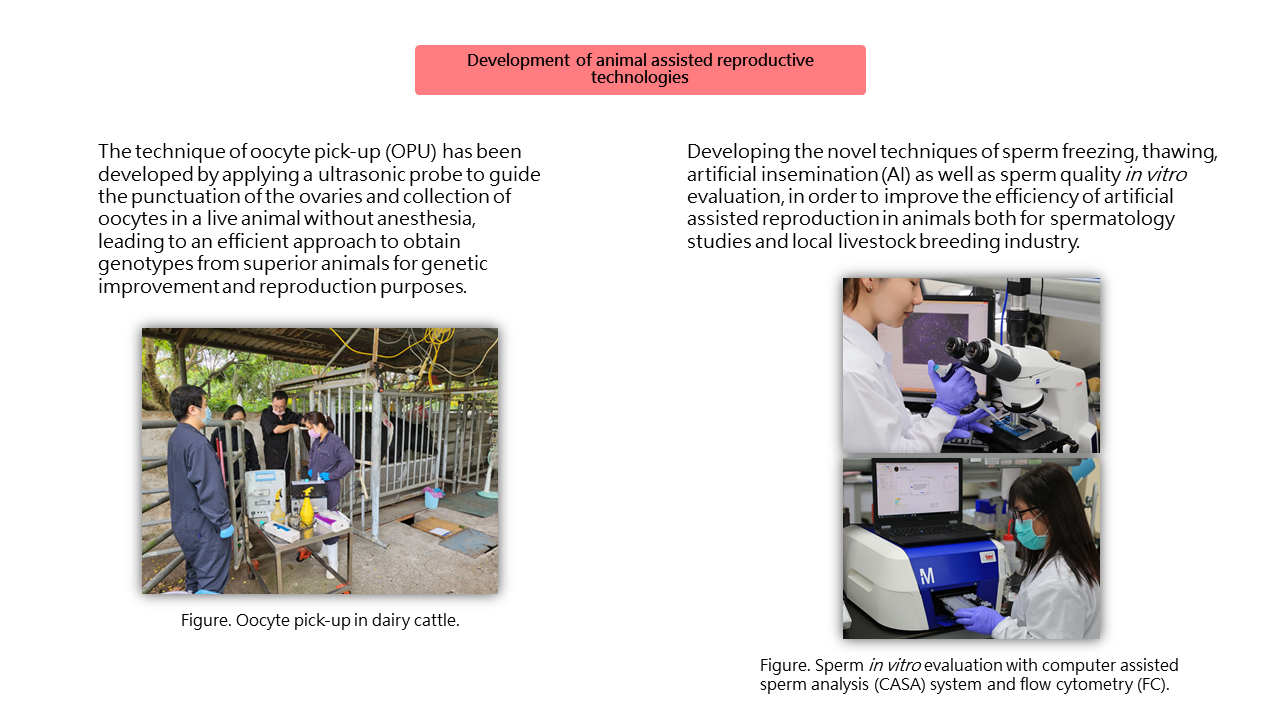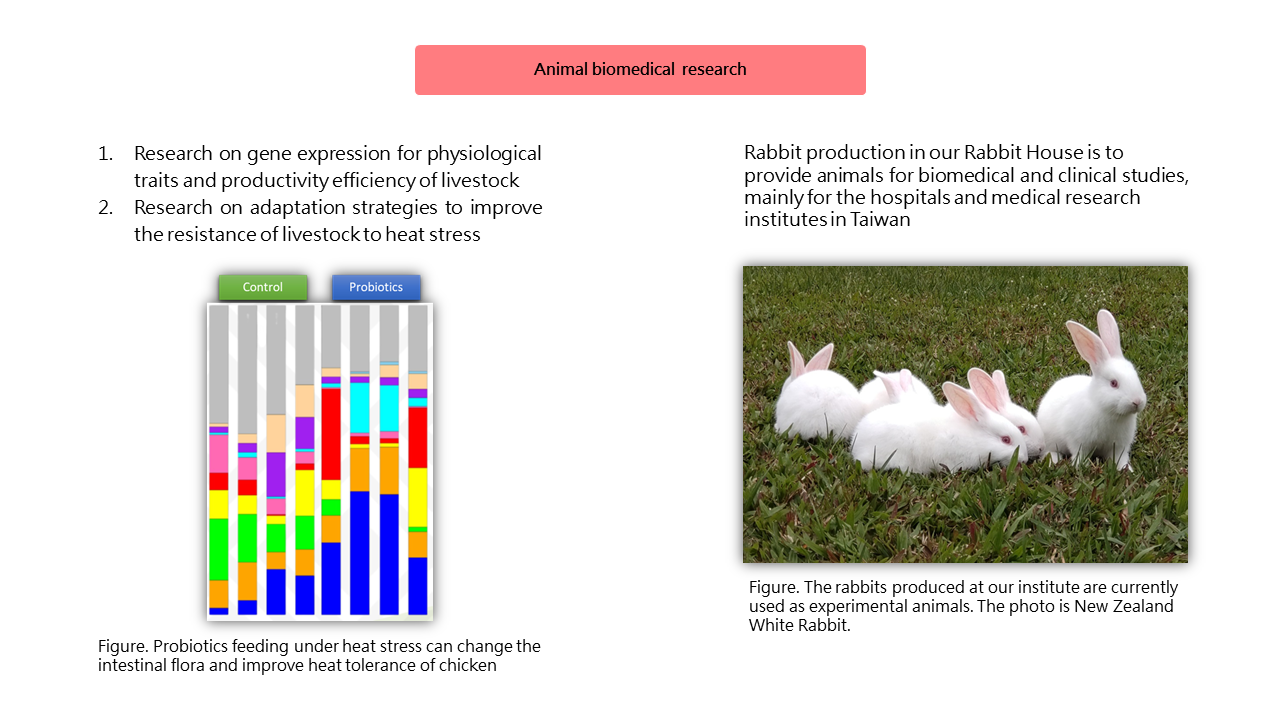Genetics and Physiology Division
Genetics and Physiology Division
This diagram outlines the structure of the Genetics and Physiology Division, which is divided into two main research areas: Animal Genetic and Breeding Research, and Animal Physiology Research. Each area focuses on specific aspects of animal genetics and physiology, contributing to improved breeding, conservation, and biomedical research.
Genetic and breeding techniques are essential for the animal industry. They help in selecting elite animal breeds for utilization, enhancing the competitiveness of local livestock and poultry industries. The image shows the homepage of the Taiwan Animal Genetic Resources Information Network.
The application of novel molecular genetic identification technology enhances the selection and breeding of farm animals, improving their economic performance. Efficient genotyping methods for candidate markers such as miR-27a, FUT2, and NR4A1 have been developed for use in the pig industry.
The Taiwan Animal Germplasm Center is responsible for cryopreserving genetic resources, including germplasm, somatic cells, and DNA. These materials are used for genetic exchange, utilization, and research. The image shows an LN CryoSystem used for storage at the center.
Feed probiotics can enhance livestock production efficiency and reduce odors in the rearing environment. Additionally, cryopreservation of genetic resources, such as semen, oocytes, and DNA, plays a role in sustainable animal industry development. The images display probiotic activity comparisons and genetic sample preparations.
Research in animal stem cells focuses on deriving induced pluripotent stem cells in chickens and enhancing differentiation in porcine stem cells. The images depict chimeric chicken embryos and porcine pluripotent stem cells.
The process of in vitro embryo production includes oocyte collection, in vitro maturation, fertilization, and cryopreservation. The images illustrate various stages of embryo development and laboratory procedures.
Advanced reproductive technologies include oocyte pick-up (OPU) using ultrasound guidance and sperm cryopreservation techniques. These methods improve artificial reproduction efficiency in livestock. The images show OPU in dairy cattle and sperm analysis using CASA and flow cytometry systems.
Animal biomedical research focuses on gene expression for physiological traits and adaptation strategies to heat stress. Additionally, rabbits produced at the institute serve as experimental animals for biomedical studies. The images show a comparison of probiotics feeding under heat stress and New Zealand White Rabbits used in research.
